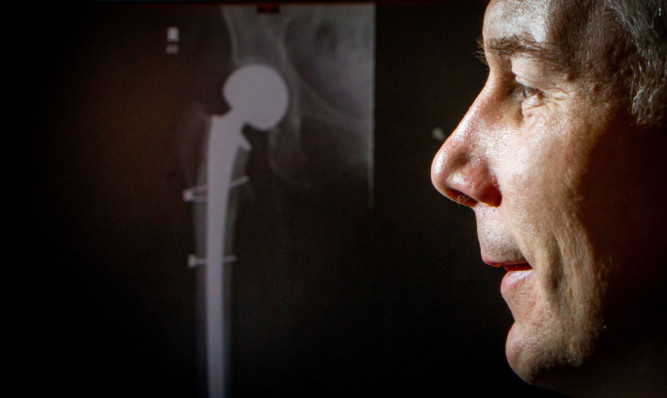The surgeon leading Scotland’s first dedicated acute hip fracture ward is hopeful the year-long pilot project now under way in Fife will help elderly patients recover more quickly and help ease pressure on the overstretched hospital bed system.
Andrew Ballantyne, consultant orthopaedic surgeon and clinical lead on acute hip fractures with NHS Fife, said the project at the Victoria Hospital in Kirkcaldy specialises in improving outcomes for patients with acute hip fractures and establishes a dedicated pathway for their care.
He said the ward, which opened to the public on January 12, is providing a holistic environment for patients and ensures a multi-disciplinary approach to patient care, including input from occupational therapists, physiotherapists and pharmacists.
NHS Fife has had a £220,000 Scottish Government investment for the ward, which has funded five ward nurses and allied health professionals, as well as the purchase of a new hoist.
It is predicted hip fractures will increase significantly across Fife over the coming years, in line with rising life expectancies.
Speaking to The Courier on a tour of the ward, Mr Ballantyne said: “Previously, any patient who experienced a hip fracture would visit accident and emergency before being transferred to more general trauma wards where they would receive care in an environment populated by people suffering from a range of injuries.
“However, a dedicated acute hip fracture ward creates an environment that specialises in this particular condition and improves a patient’s experience, potential outcome and, ultimately, increases the chances of an earlier discharge.
“Patients tend to come in for between 17 and 21 days. I would like to see that reduced to 14 days.”
Mr Ballantyne said many families did not understand the scale and potential problems caused by hip fractures.
He said 10% of hip fractures in elderly people lead to death because they are a symptom of a failing body.
Post-operative delirium is also very common in hip fracture patients due to their age and often other issues such as dementia.
He added: “It’s about quality of life. It’s about getting them home or into home care and trying to reduce their length of stay in hospital.
“By getting extra attention here, they are more likely to get fitter, and leave earlier. This is an innovative ward there is nothing like it in Scotland at all.”
Mr Ballantyne said the pilot was also a fantastic opportunity to build on multi-disciplinary expertise in the trauma wards for patients with these specific fragility fractures.
He said: “Two years ago we invested in orthogeriatric specialist nurses and their expertise will significantly contribute to the success of this pilot.
“This innovation comes when Scotland’s population has access to ever evolving healthcare and, as a consequence, is living longer.
“This ward is part of a wider national quality drive around orthopaedics.
The multi-disciplinary team have been pivotal in the planning of this initiative. It’s about ethos change.
“Should the initiative be a success, I am hopeful similar schemes can be rolled out to the benefit of patients across Scotland.”
